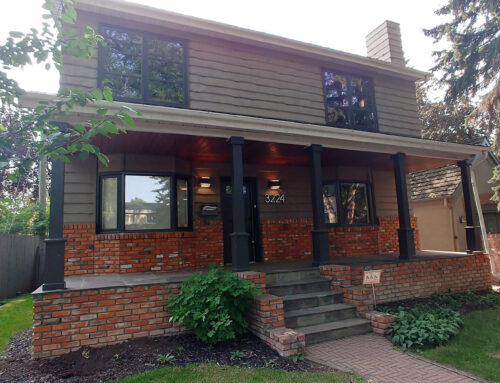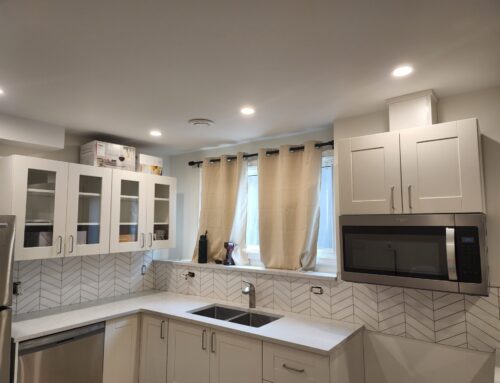Calgary’s climate, with its dry summers, fluctuating temperatures, and frequent droughts, demands a mindful approach to landscaping. Water conservation is not only an environmental necessity but also an opportunity to create resilient and beautiful outdoor spaces. This summer we also faced water restrictions because of water main pipes needing to be replaced. So whether you’re a seasoned gardener or just getting started, here are eco-friendly landscaping ideas perfect for drought conditions in Calgary.
1. Xeriscaping: Low-Water Landscape Design
Xeriscaping, a method of landscaping that focuses on water conservation, is ideal for Calgary’s semi-arid climate. The concept revolves around choosing native and drought-tolerant plants, reducing lawn size, and improving soil quality to minimize water usage.
Benefits of Xeriscaping:
- Reduces water consumption by up to 50-75%
- Decreases reliance on chemical fertilizers and pesticides
- Lower maintenance and upkeep
Plant Suggestions:
- Native Grasses: Blue grama and fescue grasses are hardy, low-maintenance choices.
- Perennials: Plants like yarrow, blanket flowers, and prairie coneflower thrive with minimal water.
- Shrubs and Trees: Saskatoon berry bushes, junipers, and trembling aspen trees not only handle dry conditions well but also add structure and diversity to your garden.
2. Rainwater Harvesting: Making Every Drop Count
Water shortages in Calgary can be alleviated by rainwater harvesting. Collecting rainwater from your roof and storing it in barrels allows you to reuse it for irrigating your garden, making it an eco-friendly alternative to municipal water.
How to Implement:
- Install Rain Barrels: Place rain barrels at the bottom of your downspouts to capture runoff from your roof.
- Create a Drip Irrigation System: Use collected rainwater to feed drip irrigation systems, which deliver water directly to the roots of plants, reducing evaporation and ensuring efficient water usage.
3. Hardscaping: Reducing the Need for Water
Incorporating hardscaping elements into your landscaping reduces water demand while adding structure and interest. Hardscaping refers to non-living elements such as rocks, pathways, patios, and decorative gravel.
Ideas for Hardscaping:
- Stone Pathways or Patios: Use locally sourced stone or permeable pavers to create seating areas or walkways. These materials allow water to percolate into the ground, reducing runoff.
- Rock Gardens: A rock garden filled with drought-tolerant plants like sedums and succulents adds a modern touch while conserving water.
4. Mulching: Retain Moisture and Protect Soil
Mulching is a simple but effective way to conserve moisture, reduce weed growth, and regulate soil temperature. Organic mulches like bark, straw, and leaves can also improve soil health over time by adding nutrients.
Benefits of Mulching:
- Slows down evaporation and retains soil moisture
- Prevents erosion during dry spells
- Helps to insulate plant roots from Calgary’s temperature fluctuations
5. Planting Native and Drought-Resistant Plants
Selecting native or drought-resistant plants ensures that your garden will survive Calgary’s water restrictions. These plants have adapted to the local climate and soil, requiring less water and maintenance.
Some Popular Drought-Resistant Plants:
- Lavender: A fragrant and attractive plant that thrives in dry conditions.
- Russian Sage: Offers beautiful purple blooms with very low water requirements.
- Silver Sagebrush: A native shrub that adds texture and color to the garden while withstanding harsh drought conditions.
6. Replacing Traditional Lawns with Ground Covers
Lawns demand a significant amount of water to stay green and lush. A great alternative is to replace or reduce lawn areas with drought-resistant ground covers like creeping thyme or clover. These plants offer green coverage, withstand foot traffic, and require far less water than traditional turf grass.
Benefits of Ground Covers:
- Lower water consumption
- Minimal mowing or maintenance
- Attracts pollinators like bees and butterflies
7. Efficient Irrigation: Water-Wise Techniques
In Calgary’s climate, it’s important to make every drop of water count. Drip irrigation and soaker hoses are highly efficient ways to water plants, as they target the root zone and reduce evaporation.
Tips for Efficient Irrigation:
- Water Early or Late: Water your garden in the early morning or late evening to avoid evaporation caused by the midday sun.
- Use Smart Controllers: Consider installing a smart irrigation controller that adjusts water usage based on weather conditions, soil moisture, and the type of plants in your garden.
8. Creating Windbreaks and Shade
Calgary’s hot and dry winds can accelerate evaporation and stress plants. Creating windbreaks and shade in your garden can help conserve water and protect your plants.
How to Create Windbreaks:
- Plant Trees and Tall Shrubs: Planting conifers or native shrubs like caragana along the perimeter of your property can shield your garden from winds.
- Install Pergolas or Shade Sails: Adding structures like pergolas with climbing plants (such as Virginia creeper) not only provides shade but also reduces the amount of water your garden needs to stay cool.
9. Composting: Improve Soil and Conserve Water
Healthy soil retains moisture better, meaning you’ll need to water less often. Adding compost to your garden improves soil structure, increases water retention, and reduces the need for chemical fertilizers.
Composting Tips:
- Use kitchen scraps, grass clippings, and leaves to create a nutrient-rich compost pile.
- Mix compost into your garden beds to improve soil texture and its ability to hold moisture.
10. Group Plants by Water Needs (Hydrozoning)
Hydrozoning involves grouping plants with similar water needs together. This approach allows you to tailor irrigation and avoid overwatering drought-tolerant plants while still giving thirstier plants the moisture they require.
How to Hydrozoning:
- Group high-water-use plants (like vegetables) together in one area.
- Drought-tolerant species can be placed in sections that receive less frequent watering.
Conclusion
Landscaping in drought-prone Calgary doesn’t mean sacrificing beauty or biodiversity. By embracing eco-friendly practices like xeriscaping, efficient irrigation, mulching, and using drought-resistant plants, you can create a sustainable, water-wise garden that thrives in Calgary’s unique climate. These landscaping techniques not only benefit the environment but also reduce water bills and maintenance efforts, ensuring that your outdoor space remains both beautiful and resilient for years to come.






